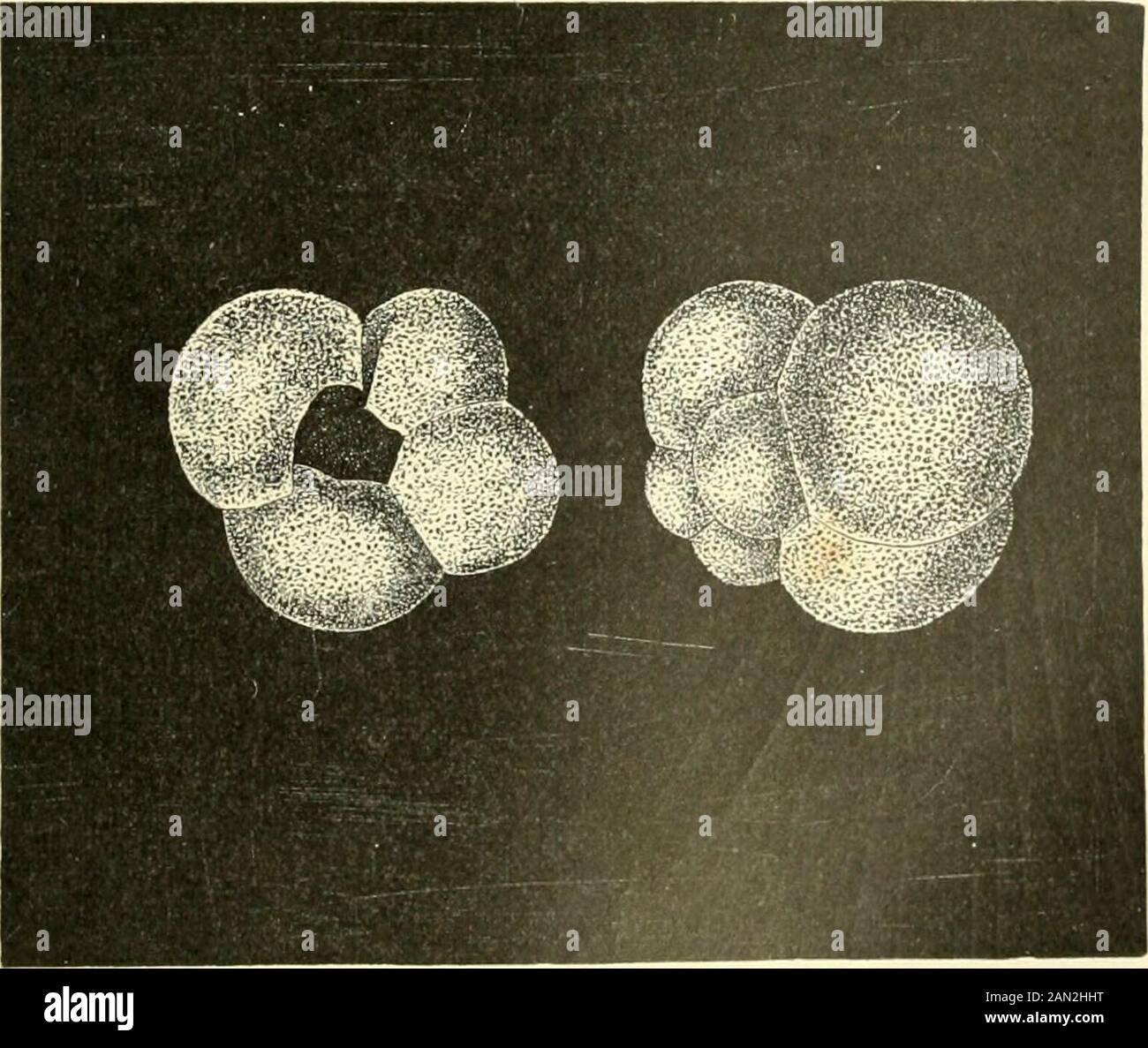The royal natural history . rought to lightthe fact that the floor of the ocean, at depths between five hundred and two thousand five hundredfathoms over vast areas, be-tween 110° north and southof the Equator, is formed of apinkish white mud, containingon an average about 60 percent, of carbonate of lime.The presence of this materialis mainly due to shells ofForaminifera, especially Glob-igerinidce, and, to a smallextent, to the remains ofminute pelagic algre, knownas coccospheres and rhabdo-spheres; the broken fragmentsof the latter in the shape ofdiscs and rods being termedcoccoliths and rh

Image details
Contributor:
The Reading Room / Alamy Stock PhotoImage ID:
2AN2HHTFile size:
7.1 MB (365.3 KB Compressed download)Releases:
Model - no | Property - noDo I need a release?Dimensions:
1720 x 1452 px | 29.1 x 24.6 cm | 11.5 x 9.7 inches | 150dpiMore information:
This image is a public domain image, which means either that copyright has expired in the image or the copyright holder has waived their copyright. Alamy charges you a fee for access to the high resolution copy of the image.
This image could have imperfections as it’s either historical or reportage.
The royal natural history . rought to lightthe fact that the floor of the ocean, at depths between five hundred and two thousand five hundredfathoms over vast areas, be-tween 110° north and southof the Equator, is formed of apinkish white mud, containingon an average about 60 percent, of carbonate of lime.The presence of this materialis mainly due to shells ofForaminifera, especially Glob-igerinidce, and, to a smallextent, to the remains ofminute pelagic algre, knownas coccospheres and rhabdo-spheres; the broken fragmentsof the latter in the shape ofdiscs and rods being termedcoccoliths and rhabdoliths.Over the greater part of the floor of the Atlantic, and over immense tracts in theWestern Indian Ocean and Pacific, over areas comprising in all about fifty millionsof square miles, the ocean-bed is formed of Globigerina ooze. Chalk is mainlycomposed of the skeletons of Globigerinidce, coccoliths, etc., and, in fact, resemblesGlobigerina ooze. The question whether the Globigerinidcv, which make up the bulk of the. shells of Globigerina (much magnified). 55§ THE LOWEST ANIMALS. ooze, live at the bottom as well as at the surface, has given rise to much discus-sion. Dr. Murray has come to the conclusion that pelagic species do not live near